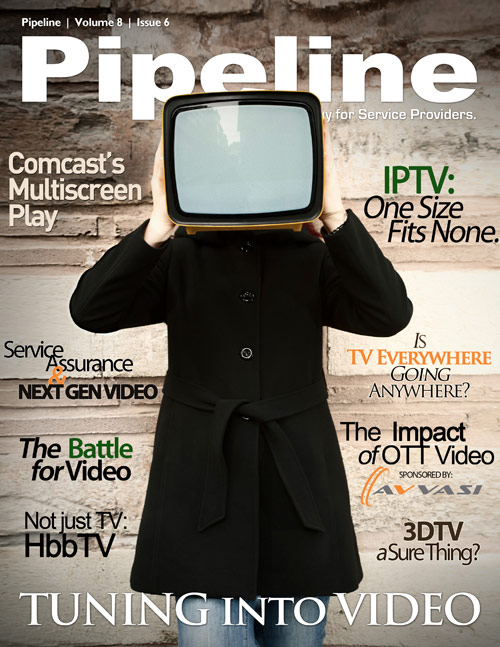By: Jesse Cryderman

“Cable operators are not really cable TV operators anymore. Their focus has really expanded beyond the TV set.”
This is what Andrew Rowe, Ericsson, said in the show daily at The Cable Show in June, and it succinctly summarizes the state of pay-TV. As devices and transports have become increasingly nimble, video consumption has left the living room, and video services must follow these trends onto new screens. In addition, a new class of device, the tablet, has emerged to outsell the laptop and deliver a larger-screen experience to the mobile environment. As Ira Gorelick, Senior Manager, Verizon, pointed out at 4GWorld, “A PC is a productivity tool. A tablet is a media consumption tool.”
Stefan De Beule, Director, Solutions Management, Alcatel-Lucent, underlined the significance of the tablet. “They are not just being used to watch short (1- or 2-minute) video clips - but are increasingly becoming a second TV screen. Tablets also prove to be a perfect device for content discovery, as it is much more intuitive than doing this on a TV screen.”
According to Nielsen's Cross-Platform Report, users in the U.S. spent 20 percent more time watching mobile video and 34 percent more time watching video on the Internet in 2011 compared to 2010. Looking toward the future, Informa forecasts that online video will account for 50 percent of all internet traffic by 2015.
Carriers must take their content to where the eyeballs are, or risk losing customers to competing OTT services. Put bluntly, a video service provider without a multiscreen plan is not prepared to compete in the future.


While many have lamented the fact that carriers' dilatory launch of news services has put them at risk of becoming dumb pipes, Comcast is a good example of multiscreen done right. In this article, we'll take a closer look at Comcast's multiscreen offering and the underlying technology that is required to enable it.
The Road to Xfinity
Matt Strauss, Comcast's senior vice president of interactive media, recently told attendees at the PromaxDBA Conference that customers want to experience their television programming on any and all mobile and terrestrial devices, and it's the operator’s job to enable this. "They don't want to hear why certain things are on certain platforms, they just want it,” said Mr. Strauss. “We have to get out of our own way. At the end of the day, the consumer’s desire to get this content on any device will win out.”
This sentiment informs Comcast's Xfinity TV and Xfinity TV app. First, Xfinity TV allows subscribers to watch on-demand movies and television series on their laptops and desktops. Viewing is as simple as logging in and browsing/searching for content, or selecting from your user queue. In addition, the internet portal allows for DVR management. The GUI is well thought out, and I'd vote it better than Netflix. The Comcast On Demand content library is fresher and deeper too.
The Xfinity TV App takes Xfinity a step further and enables subscribers to watch On Demand shows on the iPad, iPhone, and iPod touch over a WiFi connection. The app turns your iDevice into a remote control and a DVR management device as well. Comcast has been consistently refining the Xfinity TV App, revising it four times in the last year, to ensure it delivers the quality of experience that customers expect. Currently, the remote control and DVR programming functions of the app are available on the Android platform, but not video streaming. (Android devices are not standardized for hardware specs the way iOS devices are, so not all Android devices would be capable of streaming high quality video at this point in time.)







